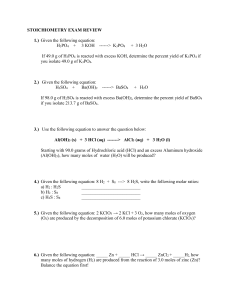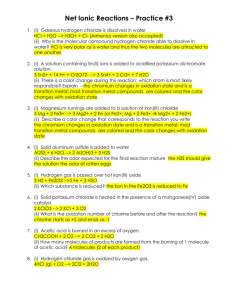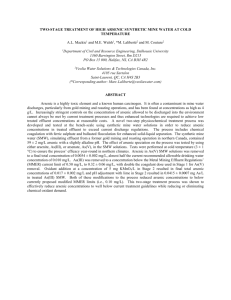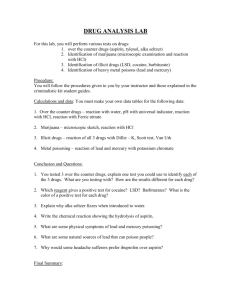Lab #1
advertisement
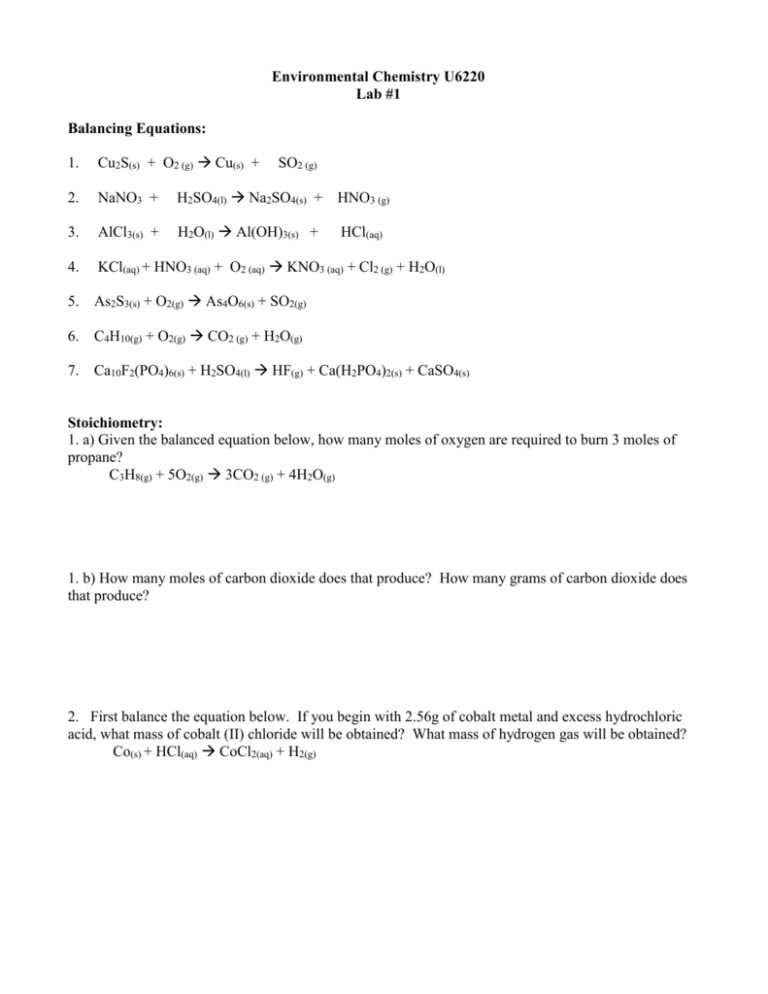
Environmental Chemistry U6220 Lab #1 Balancing Equations: 1. Cu2S(s) + O2 (g) Cu(s) + 2. NaNO3 + H2SO4(l) Na2SO4(s) + HNO3 (g) 3. AlCl3(s) + H2O(l) Al(OH)3(s) + 4. KCl(aq) + HNO3 (aq) + O2 (aq) KNO3 (aq) + Cl2 (g) + H2O(l) 5. As2S3(s) + O2(g) As4O6(s) + SO2(g) 6. C4H10(g) + O2(g) CO2 (g) + H2O(g) 7. Ca10F2(PO4)6(s) + H2SO4(l) HF(g) + Ca(H2PO4)2(s) + CaSO4(s) SO2 (g) HCl(aq) Stoichiometry: 1. a) Given the balanced equation below, how many moles of oxygen are required to burn 3 moles of propane? C3H8(g) + 5O2(g) 3CO2 (g) + 4H2O(g) 1. b) How many moles of carbon dioxide does that produce? How many grams of carbon dioxide does that produce? 2. First balance the equation below. If you begin with 2.56g of cobalt metal and excess hydrochloric acid, what mass of cobalt (II) chloride will be obtained? What mass of hydrogen gas will be obtained? Co(s) + HCl(aq) CoCl2(aq) + H2(g) 3. Balance the following equation: (NH4)2PtCl6(s) Pt(s) + NH4Cl(s) + N2(g) + HCl(g) If you heat 12.35g of (NH4)2PtCl6, what mass of platinum metal is expected? How many grams of HCL will be obtained? Limiting Reactants: 1. Balance the following reaction: S8 + O2 SO2 If you are given 20.0g of S8 and 160g of O2, which reactant will be limiting? How much of the excess reactant will remain unreacted? 2. Aspirin is produced by the following reaction: C7H6O3(s) + C4H6O3(l) C9H8O4(s) + CH3CO2H(aq) salicylic acid acetic anhydride aspirin If you mix 100 grams of each reactant, what is the maximum amount of aspirin that can be produced? Chemical Analysis: 1. A sample of limestone and other soil materials is heated, and the limestone decomposes to give calcium oxide and carbon dioxide. A 1.506g sample of limestone-containing material gives 0.711g of CaO, in addition to gaseous CO2, after being heated at a high temperature. What is the weight percent of CaCO3 in the original sample? Bonding: 1. Indicate which are covalently bonded compounds and which are ionic compounds. For the covalent compounds, are they polar or non-polar? Are there covalent bonds within ionic compounds? a) NaCl b) H2O c) CaCl2 d) CaCO3 e) NH3 f) NH4Cl g) H2 h) O2 i) NaPO4 Environmental Analytical Chemistry You’ve been hired by a graduate student to run her analyses in a sediment series. You just ran a calibration curve and the whole series of sediment samples. You need to transform all arsenic data (raw data) into mass per mass of sample. And you also want to run look at normalize the data per mass of aluminum (given in percentage) and per unit mass of organic carbon (also given in percentage). 1) Draw your calibration curve and calculate your calibration equation. Is this an acceptable calibration curve? 2) Transform all your raw data in total mass of arsenic (micrograms, ug) 3) Transform all you arsenic data in mass per mass of sediment (ug/g) 4) Plot your vertical profile of arsenic in the sediment column (vs. depth – cm) 5) On separate graphs, plot the As/Al and As/Corg profiles. 6) If you know that the sediments have accumulated in this lake at an average rate of 0.7 cm per yr (cm/yr), plot the As concentration vs. age of sediments. 7) What can you say about your data in terms of a. total arsenic content, b. normalized content (to Al and Corg). Why would we want to normalize the data in this way? c. Arsenic vs. age




